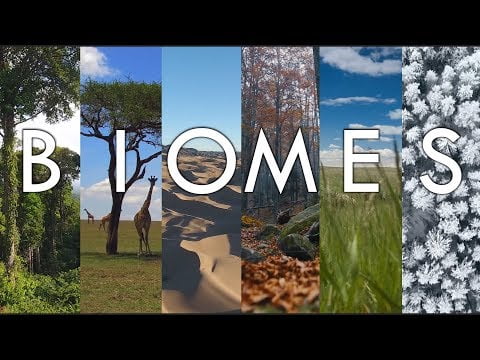Biomes – The Living Landscapes of Earth : Introduction To Biomes Of The World : Geodiode
When you look at pictures of the Earth from space, what’s the first thing that you see? A blue marble, as some have described it. A water world where oceans and swirls of white clouds dominate. But most of us will then have our attention drawn to the shapes imprinted on its surface – the continents. And they come in many colors. The white of Antarctica, the beige of the Sahara, the light green of grasslands, and the darker shades of our planet’s forests in their many forms.
So many of these colors that give the world its look are the result of trillions of individual plants growing upon the surface. Which plants grow where is determined by many factors, with the climate being the most dominant factor. Desert and scrubland, savannah, prairie and steppe, tundra and taiga, woodland and rainforest. They are at the base of almost every food chain of every animal – the habitats that sustain all other lifeforms, and ourselves. Collectively, they are known as biomes – the living landscapes of Earth.
In the first of a brand-new series, we are introduced to the concept of a biome, what it is, how it is that way, the factors that determine what plants grow in what area, and list out the Biomes to be studied in more detail in future episodes, including:
– Tropical Rainforest
– Savannah
– Shrubland or Scrub
– Desert
– Prairie and Steppe
– Deciduous Woodlands
– Boreal Forest or Taiga
– Tundra
– Highlands
– Wetlands
4K resolution map can be found here: https://i.redd.it/smdi1q24qrm31.jpg
FURTHER READING:
LONS08 – A new world natural vegetation map for global change studies –
– –
CREDITS
(CREATIVE COMMONS LICENSE):
Steve Jurvetson (Deciduous Conifers) https://flic.kr/p/46BT
(PUBLIC DOMAIN):
NASA (Earth from ISS selection)


